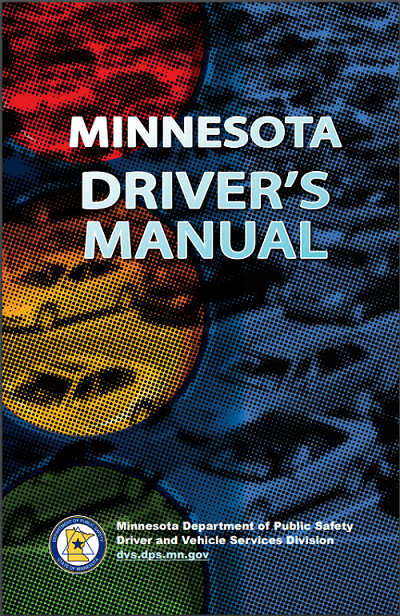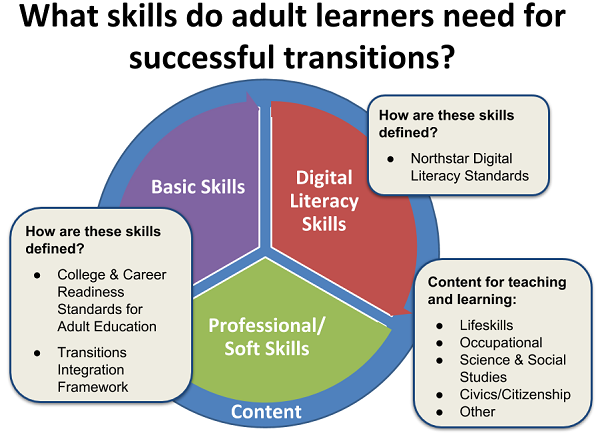- MN ABE Connect
- Archive
- Minnesota Driver’s License Exam – Helping Our Students Succeed
 September 23, 2019
September 23, 2019
Minnesota Driver’s License Exam – Helping Our Students Succeed
Elizabeth Andress, Adult Career Pathways ConsultantMany ABE learners need a driver’s license as a step toward their family, career or community goals – and many ask for our help. Several Minnesota ABE programs have responded to this need and are now sharing their materials via the ATLAS online resource library. Read about their experiences and insights here. Then check out the materials for use in your program!
 The need – To pass the written exam as the first step to obtaining a Minnesota Class D (regular) driver’s license, one needs to be familiar with basic vocabulary, signs and rules of the road. The primary source for exam preparation is the Minnesota Driver’s Manual. However, the Minnesota manual is written at approximately a ninth-grade reading level (reference). For many of our learners – especially English language learners but also many U.S.-born lower-level readers – successful self-study of this manual is out of reach. Many license aspirants may also suffer test anxiety or be unfamiliar with effective test-taking strategies.
The need – To pass the written exam as the first step to obtaining a Minnesota Class D (regular) driver’s license, one needs to be familiar with basic vocabulary, signs and rules of the road. The primary source for exam preparation is the Minnesota Driver’s Manual. However, the Minnesota manual is written at approximately a ninth-grade reading level (reference). For many of our learners – especially English language learners but also many U.S.-born lower-level readers – successful self-study of this manual is out of reach. Many license aspirants may also suffer test anxiety or be unfamiliar with effective test-taking strategies.
The role of ABE – ABE programs are responding by offering short exam prep classes that break down the information, provide multiple modes of learning and memorization, plus lots of test-taking practice. In addition, a class creates a cohort of peers who can encourage one another in their study and cheer classmates on as they take and pass the test.
According to Brad Hasskamp, education policy specialist at the MN Department of Education ABE office, there are two models for providing driver’s license instruction in ABE to make it eligible for contact hours. It can be delivered as an integrated/contextualized course or as a supplemental course.
 Integrated/contextualized: The preferred, best practice model is to integrate core content – i.e., reading, writing, math, ESL, or diploma instruction – with the driver’s license instruction. Use the three sets of content standards to define course objectives beyond just passing the written exam. See an example in the Detroit Lakes ABE course below. Their objectives include:
Integrated/contextualized: The preferred, best practice model is to integrate core content – i.e., reading, writing, math, ESL, or diploma instruction – with the driver’s license instruction. Use the three sets of content standards to define course objectives beyond just passing the written exam. See an example in the Detroit Lakes ABE course below. Their objectives include:
- Identify and apply general academic and content-specific words and phrases related to transportation and applicable laws (CCRS)
- Evaluate proper and improper interaction in scenarios involving other drivers and/or law enforcement and recommend improvements (TIF)
- Demonstrate skills required for taking a computer-based exam (Northstar)
- Supplemental course: The other allowable model is to offer a driver’s education course as a supplemental offering. In this case, the course can focus solely on passing the driver’s license exam, with no integrated core content. However, under this model, you can only count contact hours for ABE students concurrently enrolled in other courses that provide core content (reading, writing, math, ESL, or diploma instruction). Individuals receiving no instruction in core content would not be considered ABE students. See an example in the St. Paul ABE course below.
Detroit Lakes ABE – Integrated / contextualized approach
As part of the 2018-19 Adult Career Pathways Course Design professional development cohort, Jenn Hellekson of Detroit Lakes has worked to design a course curriculum that effectively incorporates MN ABE content standards. Besides demonstrating understanding of road knowledge, traffic laws, and vehicle operation and identifying/interpreting road signage, objectives were expanded to include literacy, transitions and digital skills. The course aims to equip learners to be able to:
- Identify, evaluate and apply test-taking strategies
- Identify and apply general academic and content-specific words and phrases related to transportation and applicable laws
- Identify career pathways where possessing a driver’s license is useful or necessary
- Evaluate proper and improper interaction in scenarios involving other drivers and/or law enforcement and recommend improvements
- Demonstrate skills required for taking a computer-based exam
Instructional materials for the standards-aligned objectives are currently being developed and will be available at the course hyperlink later this fall.
Jenn says of her approach to the design of this class:
Even with a short class like this, where students think their sole goal is to get their driver’s license, we have an opportunity and obligation to enhance the learning experience to include improving their reading skills, charting a future pathway, and orienting to interactions they may encounter as new drivers in the U.S.
St. Paul ABE’s experience – Supplemental approach
Julie Lindholm at St. Paul ABE has developed and taught an 8-session, 16-hour course focused primarily on passing the written license exam, offered to enrolled ABE learners. Her course outline and instructional materials are structured by covering one chapter of the manual each class session. Each session includes warm-ups, target vocabulary and practice activities.
Julie reflects on her experience teaching this course at Hubbs Center:
I had positive feedback from the Driver’s Permit class. Students were eager to learn. It was a mix of not only language levels but also students at various points in the process of getting a license: some had driven before in another country; others had taken the written test a few times and hadn’t passed; and some were very recent arrivals to the US. There were native speakers of English along with English language learners.
Differentiation is a challenge and a must. I’ve added a vocabulary list with a worksheet for each chapter and simplified some text. Further differentiation will likely be necessary based on the language and reading levels of your students.
Osseo ABE – More materials for test practice
Jill Beulke of Osseo ABE created materials and taught a 10-day class at the same time her own teenager was studying for the exam. Materials include daily 10-question practice tests with answer keys.
Jill’s focus was primarily on the exam content. She says:
I found that students who focused their studies on practice questions did much better on the test than those who focused on the manual, which required lots of fumbling their way through the book.
Resources for the one-room schoolhouse setting
Most of the materials in the above three courses can be creatively adapted to a one-room schoolhouse or independent study lab setting. In addition, Shari Brunes has a ready-to-go list of resources that any program can use as they seek to support their students’ study for the license written exam.
 The opportunity
The opportunity
A supplemental course allows your ABE program to respond to the needs of your existing ABE learners in their goal to attain a Minnesota driver’s license. With the materials available in the ATLAS resource library, any program should be able to provide this service.
An integrated/contextualized course is a great opportunity to invite new learners into the ABE setting, addressing their immediate goal of a driver’s license while increasing their literacy, transitions and digital literacy skills, and potentially enrolling them in additional ABE courses moving forward to help them meet their next set of career or life goals.
Newsletter Signup
Get MN ABE Connect—the official source for ABE events, activities, and resources!
Sign UpArticle Categories
- ABE Foundations/Staff Onboarding
- ACES/Transitions
- Adult Career Pathways
- Assessment
- CCR Standards
- Citizenship
- COVID-19
- Cultural Competency
- Digital Literacy/Northstar
- Disabilities
- Distance Learning/Education
- ELA
- Equity/Inclusion
- ESL
- HSE/Adult Diploma
- Listening
- Math/Numeracy
- Mental Health
- Minnesota ABE
- One-Room Schoolhouse/Multilevel
- Professional Development
- Program Management
- Reading
- Remote Instruction
- Science
- Social Studies
- Speaking/Conversation
- Support Services
- Teaching Strategies
- Technology
- Uncategorized
- Volunteers/Tutors
- Writing